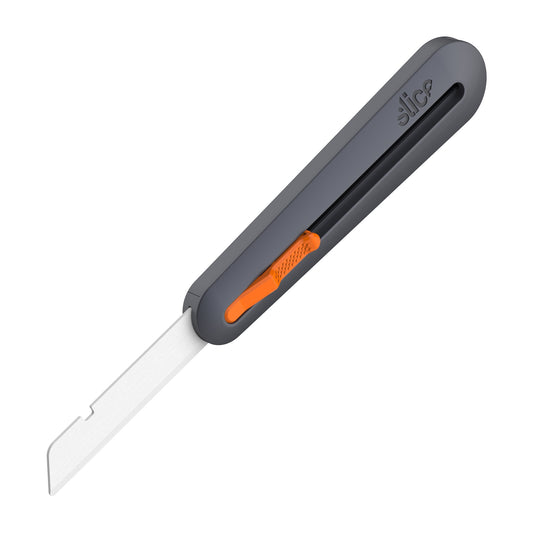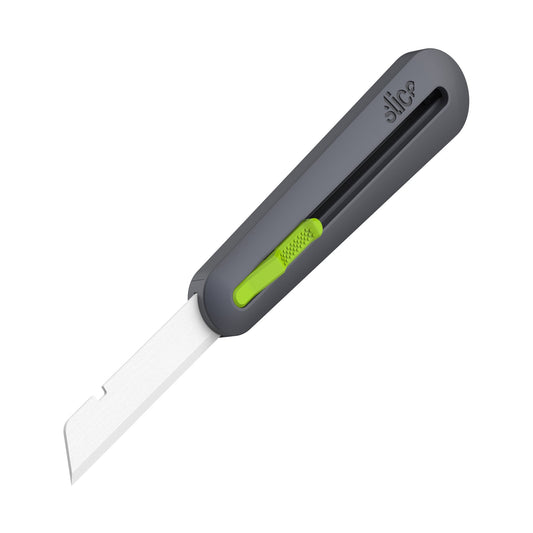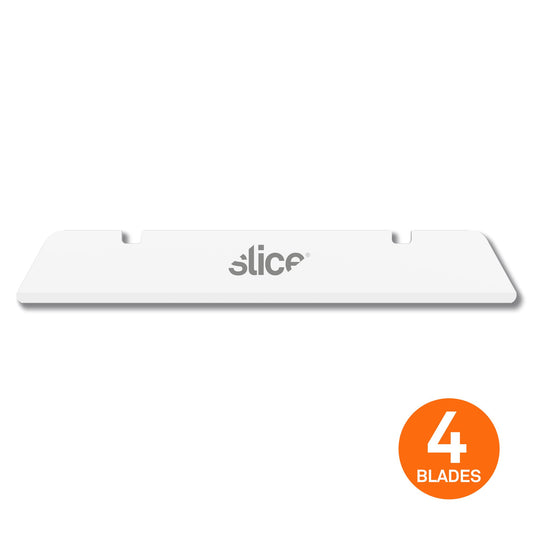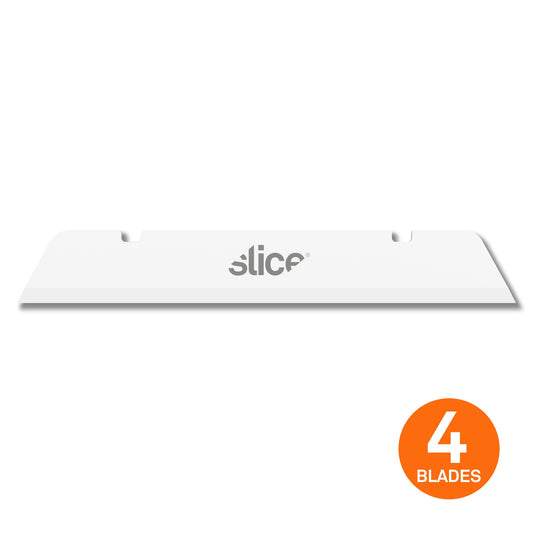Cutting Fiberglass Insulation With Safe, Durable Tools
This video shows the Slice® Manual Industrial Knife easily cutting fiberglass insulation. Slice also makes an Auto-Retractable Industrial Knife. Both tools feature Slice’s patent-pending safety blade, which lasts up to 11 times longer than steel.
Anyone whose tasks include cutting fiberglass insulation, or insulation batts, knows that this material dulls steel blades quickly.
Slice® ceramic blades feature a patent-pending design, which makes them longer-lasting and safer: Slice blades last up to 11 times longer than steel and are safe to the touch. Choose from our Auto-Retractable Industrial Knife or Manual Industrial Knife for cutting insulation batts.
The blade on each tool extends to 76 millimeters, roughly 3 inches: it was made specifically for cutting insulation batts and thick foam.
Both models feature a slider that the user must engage to expose the blade. The auto-retractable model requires you to keep the slider engaged. If you release the slider, the blade will automatically retract into the handle.
The manual model allows the user to fix the blade in place at four cutting depths: 6 millimeters, 28 millimeters, and 53 millimeters, and the full 76 millimeters. You must re-engage the slider to retract the blade into the handle.
Slice Blades Are Unique
Slice blades are made of 100 percent zirconium oxide. This material is extremely hard, and Slice’s thicker blade design takes advantage of this property: this is why Slice blades last so long.
Steel is a relatively soft material, which is why it dulls quickly. Abrasive material like fiberglass is particularly tough on blade edges. This means you’ll be required to make blade changes often when using metal blades for cutting insulation batts. Handling a blade is risky business; it should be done as infrequently as possible. But you should also never work with a dull blade: a blade is most dangerous when it’s dull and when it’s overly sharp.
Slice safety blades also differ from traditional ceramic blades. Not all ceramic blades are created equal: weaknesses commonly attributed to traditional ceramic blades, like fragility, don’t apply to Slice blades. Similarly, strengths found with Slice blades, like safety, don’t apply to traditional ceramic blades.
Slice blades have a proprietary finger-friendly® blade edge. Because steel blades dull quickly, they come overly sharp out of the box. Traditional ceramic blades are even thinner and sharper than metal blades. Slice makes the only truly safer blade.
Slice ceramic blades also features these properties:
- Rust free
- Maintenance free
- Non-conductive
- Oil and lubricant free
- Non-sparking
- Non-magnetic
How to Cut Fiberglass Insulation Rolls Efficiently
Fiberglass is thick, so it requires a long blade. Because steel is relatively soft, when it’s long and thin, it flexes. This instability makes the tool challenging to control. These blades are also prone to snapping during tasks that require sustained pressure, like cutting fiberglass insulation. When this happens, a razor-sharp broken-off piece goes flying unpredictably.
Slice’s thicker, more durable ceramic blades are rigid. They make clean cuts through thick, rough material. This, combined with their longer lasting cutting edge, means you experience clean, precise cuts over the long haul.
With Slice, You Need Little Know-How: Cut Fiberglass Insulation with Ease
When cutting fiberglass insulation, techniques are straightforward: measure and mark where you want to cut, check that your long-bladed cutting tool is in good working order, use firm pressure, and cut. Use a straightedge if you want to ensure a particularly straight cut.
Are you left handed? Don’t fret! All Slice tools are ambidextrous. By default, the cutting edge is positioned to accommodate a righty. Remove the blade, flip it, and reinstall it. You’ve now got a cutter for a lefty. And you don’t need any tools to make this change.
Slice makes two blades to fit the industrial knives: a pointed-tip blade and a rounded-tip blade. The former is a good choice if you need to start your cut in the middle of the insulation. If you start your cuts from the edge, the rounded-edge blade works well, and it’s safer. This blade is so safe, in fact, when you finally do have to dispose of it, you don’t need to use a sharps box.
Safety Driving Innovative Design
At Slice, safety is the primary goal. This is the drive behind the design of our unique blades and innovative tools.
We’re always interested in hearing from users about their Slice experiences. How do Slice industrial knives perform for you when cutting fiberglass insulation?




